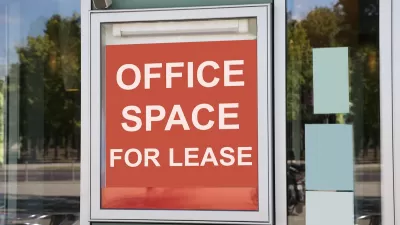A building’s potential for adaptive reuse is based on a variety of characteristics.

In an article for Columbus Business First, Bonnie Meibers describes some key factors that construction industry experts say make an office building a good candidate for adaptive reuse.
These include:
- Form: A building’s shape and ceiling heights dictate how adaptable it is for new uses.
- Floor plates: The size and shape of floor plates influences future uses.
- Envelope: The design of exterior walls impacts how well a building can meet energy and building code requirements.
- Services: Existing services like elevators and HVAC can be repurposed for future occupants.
- Context: The surrounding neighborhood, access to transit, and other nearby amenities will affect how well new tenants can integrate into the neighborhood.
- Code: Zoning codes sometimes prohibit a use change.
Officials in Columbus, Ohio are looking to the example of Calgary, Alberta, Canada, where the city launched an incentive program in 2021 to encourage developers to convert vacant buildings to new uses. “Programs including the Ohio Transformational Mixed-Use Development Tax Credit, the Ohio Historic Tax Credits and the city of Columbus' downtown residential tax abatement have closed the financial gap for many Central Ohio projects.”
FULL STORY: Experts say Central Ohio office buildings with these characteristics could be good candidates for conversion

Rethinking Redlining
For decades we have blamed 100-year-old maps for the patterns of spatial racial inequity that persist in American cities today. An esteemed researcher says: we’ve got it all wrong.

Planetizen Federal Action Tracker
A weekly monitor of how Trump’s orders and actions are impacting planners and planning in America.

California High-Speed Rail's Plan to Right Itself
The railroad's new CEO thinks he can get the project back on track. The stars will need to align this summer.

US Senate Reverses California EV Mandate
The state planned to phase out the sale of gas-powered cars by 2035, a goal some carmakers deemed impossible to meet.

Trump Cuts Decimate Mapping Agency
The National Geodetic Survey maintains and updates critical spatial reference systems used extensively in both the public and private sectors.

Washington Passes First US ‘Shared Streets’ Law
Cities will be allowed to lower speed limits to 10 miles per hour and prioritize pedestrians on certain streets.
Urban Design for Planners 1: Software Tools
This six-course series explores essential urban design concepts using open source software and equips planners with the tools they need to participate fully in the urban design process.
Planning for Universal Design
Learn the tools for implementing Universal Design in planning regulations.
City of Camden Redevelopment Agency
City of Astoria
Transportation Research & Education Center (TREC) at Portland State University
Regional Transportation Commission of Southern Nevada
Toledo-Lucas County Plan Commissions





























